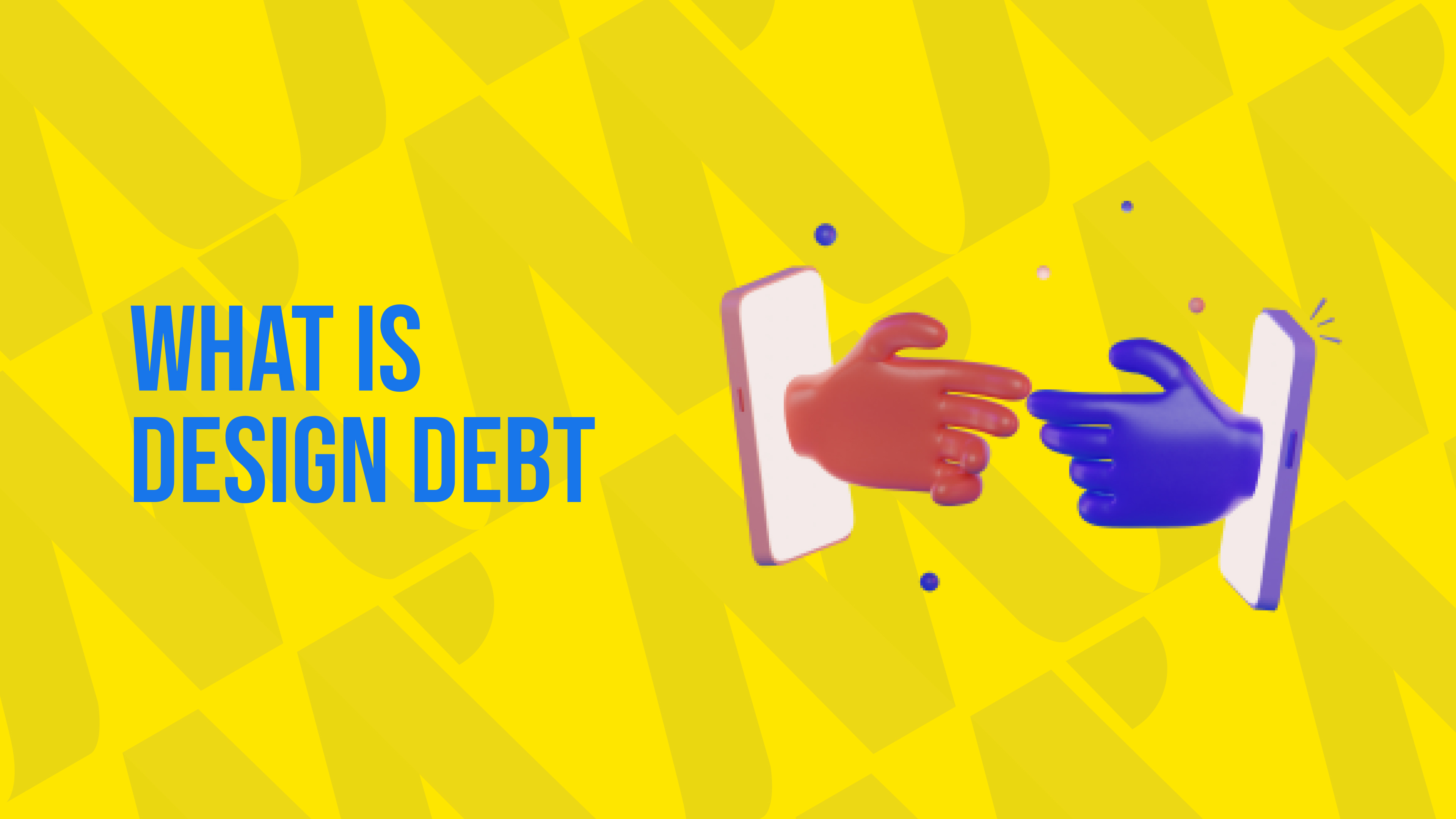Having a cohesive and consistent experience is important in design. So, we need to process and recognize when our design has gone through so many modifications and experiments that it has become a completely different version of itself; this lesson and learning should be compiled back together in a single and cohesive design. In the iterative mindset, a lot of the time we forget to do the last step.
Design debt is what happens when known user experience issues have not yet been fixed. It is often interchangeably used with UI/UX debt.
Design debt was derived from a more popular concept of ‘technical debt’; a metaphor coined by Howard Cunningham, a renowned American programmer. He regards skimping or cutting corners in the course of the development of a project to reach short-term goals as getting yourself into financial debt. The cohesion and the consistencies in the design will degrade over time as new features are added to a project and new experiments are run.
So, design debt in simplest words is releasing a product with sub-par design, the cost of which will come later.
What is technical debt?
When shortcuts are taken and proper research and framework are avoided in introducing and creating a design, it might help you launch the product in a record time and make it easier for the developing team, but over time, the entire codebase and the design become more prone to bugs. Eventually, future development plans become slower and difficult to go through. This is your way of paying off the debt in design inconsistency.

Where Does Design Debt Come From?
- As mentioned above, to deliver a product or introduce a feature in a short period, companies often speed up the process of development. User goals and the problem you’re trying to fix with your product are not properly researched and tested.
- Starting a design process without a clear goal in mind, so that every developer is working with their ideas is also the culprit here.
- When designers and developers are not involved in the implementation process.
- The old features start to get outdated and don’t meet the premise of the new product and services
- Lack of budget and skilled human resources
- Overload of features by different teams without clear communication and collaboration.
- No testing on user interface before implementing a new feature
- Not enough research on user satisfaction and analytics of the product
For eg: When a new website is created, it is debt-free. The reciprocal awareness and interaction between different components with well-thought-out and researched UX design creates cohesion and consistency in the design. When new elements are made and integrated into the design, they eventually drive away from the original. On the outside, it looks like we are improving the design, but the entire website becomes disjointed; even when it is performing better quantitatively.

Eventually, we have to refactor the entire design which comes at a higher price than timed refactoring and revisions.
This can be explained by the principle of ‘boil the frog’, which describes a slowly boiled alive frog. The premise is that if a frog is put suddenly into boiling water, it will jump out, but if the frog is put in normal water which is then brought to a boil suddenly, the frog will not perceive the danger and will be cooked to death. The message here is that people become unable to identify threats and dangers that arise gradually rather than suddenly.
How Does It Affect You?
Hasty feature implementation and development compromises the integrity of the user experience. Minor flaws and deviations accumulate with every sprint and eventually turn into an inconsistent, disjointed UI that results in a disappointing experience; eventually driving your customers away from you and your products. It works like a slow poison; slowly but surely it will pull you under.
How To Identify Design Debt?
Every company or system has a design debt. The most obvious way to recognize you have one is through testing and experimenting on the user-end. How are your users responding to your services? Is the traffic unusually low? It may be because of design debt.
Consult your dev team. Revise your code and find out which part of the code is especially difficult to work with? Is it making it difficult to add new features?
You can also ask juniors and newcomers to identify which part of the code seems intimidating and difficult to understand? Check if your language and framework versions are updated.
Check the state of your project’s documentation. Sometimes they are difficult to understand while other times they are absent altogether. Is it making the team less productive?

How to deal with design debt?
Unlike real debt, design debt is not accounted for. No system can identify and keep track of design debt for you. Design debt isn’t even a number. It is the decline in user experience and service provisions.
- The first step to deal with design debt is to acknowledge it. We need to acknowledge all the disjointed elements and codes that are outdated or broken. Unless you acknowledge it, there is no other way to go about it.
- Communicate with your design team and bring forward the notion that a lot of your design code needs to be refactored.
- Visit all the elements, run experiments, and how they contribute to the overall user experience. If they seem to be having problems (which from a UI/UX point of view, it is easy for you to recognize), take notes.
- After all, the problem areas are identified and listed, sort them into a list from most to least problematic and urgent. This allows you to improve each one in every sprint and tackle them one at a time.
- Once, all the debt is cleared, you will be disappointed to know, it is always there, still. Design debt is a gradual process and it needs to be addressed from time to time for a promising design.
After all, this, if you think you have cleared your design debt, think again. The flaws and disorders in your system will keep arising from time to time. There is no getting rid of design debt once and for all. You will need to maintain and remove these flaws every once in a while. Not only will this keep your system in check and give your customers a good experience, but it will also build your collaborative spirit. Staying ahead of all these inconsistencies gives you an advantage over your competitors on the market. Because after all, a good team keeps on improving.

